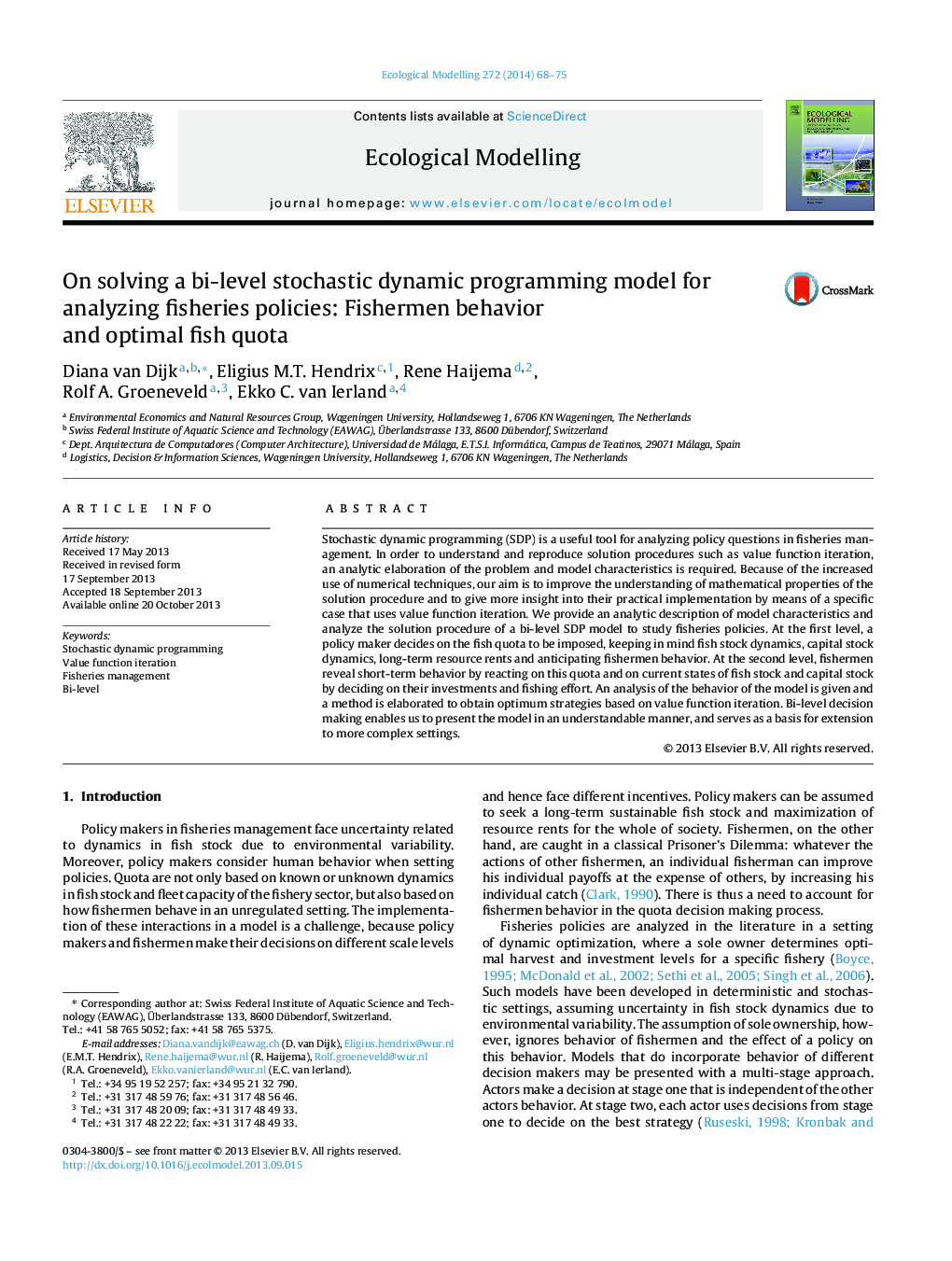| Article ID | Journal | Published Year | Pages | File Type |
|---|---|---|---|---|
| 6296984 | Ecological Modelling | 2014 | 8 Pages |
Abstract
Stochastic dynamic programming (SDP) is a useful tool for analyzing policy questions in fisheries management. In order to understand and reproduce solution procedures such as value function iteration, an analytic elaboration of the problem and model characteristics is required. Because of the increased use of numerical techniques, our aim is to improve the understanding of mathematical properties of the solution procedure and to give more insight into their practical implementation by means of a specific case that uses value function iteration. We provide an analytic description of model characteristics and analyze the solution procedure of a bi-level SDP model to study fisheries policies. At the first level, a policy maker decides on the fish quota to be imposed, keeping in mind fish stock dynamics, capital stock dynamics, long-term resource rents and anticipating fishermen behavior. At the second level, fishermen reveal short-term behavior by reacting on this quota and on current states of fish stock and capital stock by deciding on their investments and fishing effort. An analysis of the behavior of the model is given and a method is elaborated to obtain optimum strategies based on value function iteration. Bi-level decision making enables us to present the model in an understandable manner, and serves as a basis for extension to more complex settings.
Related Topics
Life Sciences
Agricultural and Biological Sciences
Ecology, Evolution, Behavior and Systematics
Authors
Diana van Dijk, Eligius M.T. Hendrix, Rene Haijema, Rolf A. Groeneveld, Ekko C. van Ierland,
